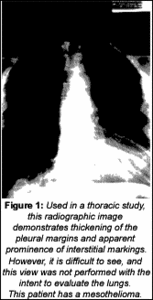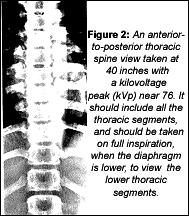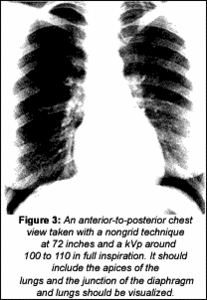There are attorneys specializing in the laws pertaining to occupational diseases; there is also an International Classification of Radiographs of the Pneumoconioses, and many radiologists specialize in just the field of study related to this reference set. My point here is not to give information regarding asbestos exposure, but to impress upon you the importance of taking appropriate thoracic views. If your intention is to perform a thoracic spine study, use collimation to view the spine better. If your intention is to take a chest view, then use the proper technique for chest views.
As you can see, these are very different views, and the techniques are very different. Many of us do not have our x-ray rooms set up to perform chest views. Our rare earth screens are not intended to be used for performing P-A chest views. It is too easy to miss lesions, even on very good studies of the chest. If you are interested in improving your technique, there are many references available; some written by chiropractors, and some that may be accessed through chiropractic colleges. If you are having any problems with your x-ray unit or processing, contact your local supplier to help you. If you are still having problems, call your nearest DACBR or the radiology department at a chiropractic college; any one of them will help you with your technique problems. Many times, it is just a matter of chemistry or changing your kVp.
Deborah Pate,DC,DACBR
San Diego, California
Click here for more information about Deborah Pate, DC, DACBR.








